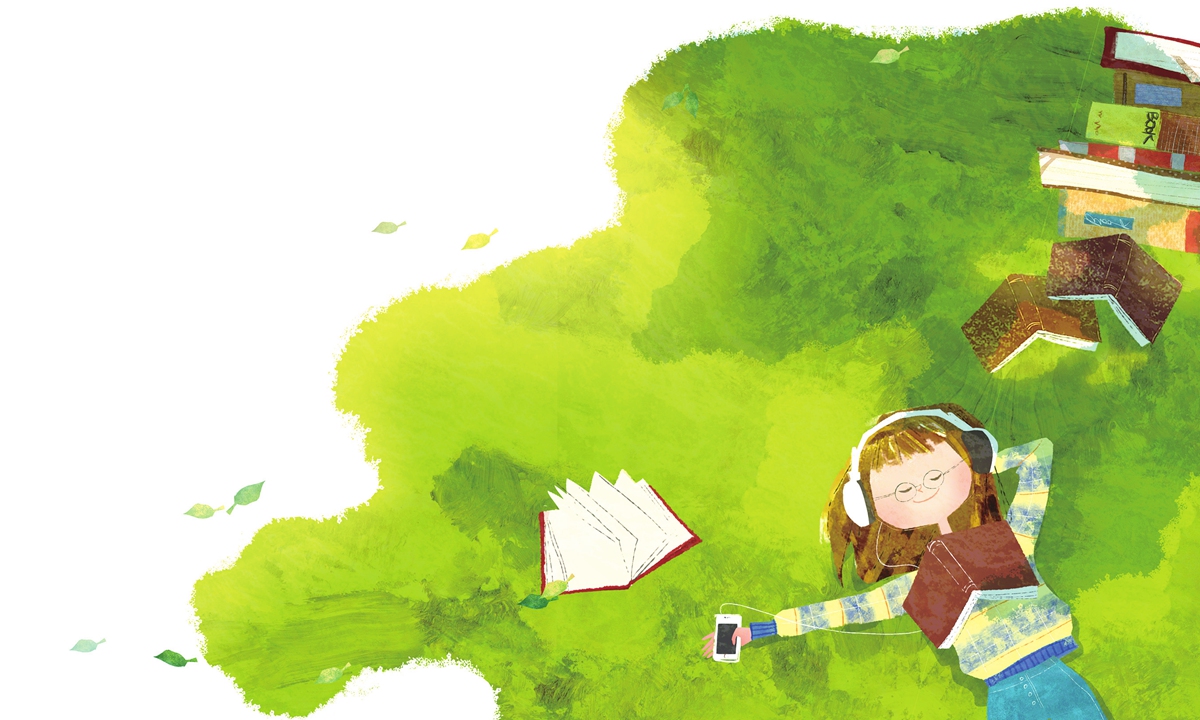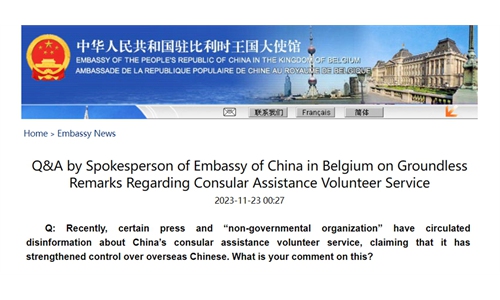MY READING LIFE / STUDENTS' WORKS
My little review on the classic 'Pride and Prejudice'
Learning about love
Editor's Note:
"Read ten thousand books, and your pen will be guided as if by the gods" is an ancient Chinese idiom that can be seen in students' textbooks. China's Ministry of Education has published an action plan to further promote reading among students across the nation. With new and diverse book recommendations, the reading scene is expected to be revived not only at schools, but also across society. To contribute to this endeavor, the Global Times launched "My Reading Life" essay contest for middle school students.
Please pick up a pen and share your stories with us at reading@globaltimes.com.cn
Participants will be rewarded once the article has been selected.

No matter if it is a woman in her 30's or an adolescent girl, English novel Pride and Prejudice has always been prized by female readers all around the world as one of the most popular books.
Although there are many people who love this classic due to its subtle yet touching love story, me, a common reader, who was attracted at first also by the love story, has now finally discovered the reason why I truly appreciate it after many times of reading.
I love it not because it talks about love, but teaches me how to love.
Social obstacles
In 1813, author Jane Austen, one of the most notable female authors in the world, published her novel Pride and Prejudice. In an awfully simple explanation of the story, the book depicts the love relationship between the ordinary yet free-standing heroine Elizabeth and the hero Mr Darcy, a "pretentious" rich man who is reticent, kind and trustworthy.
The novel, along with Austen's first book Sense and Sensibility, has made the author famous as a keen observer of women's stories. Set in early 18th century Europe, Austen's depiction of her women characters were vividly contextualized by the status quo of English society back then - an environment that had rigid social classifications and insufficient trust in women's independent identity.
There are several scenes in the book that explain the dilemma well. One is when Elizabeth's sister flaunts her husband's military officer title to her siblings, and another was when Elizabeth was persuaded by her mum to marry someone she doesn't love.
Compared to the well-off Mr Darcy, who is described by Austen as a young man who owns "a half of the Derbyshire," Elizabeth is impoverished and way too common to marry a man who does not belong to her class.
Austen used the analogy "pride" and "prejudice" to denote Mr Darcy and Elizabeth, respectively. It is true that the writer has designed many dramatic twists to deliberately lead the two characters to hate each other, but I would argue that their prejudices toward each other, at least during the early part of the story, were mostly came about, not by such incidents, but due to the stereotype Elizabeth, who represents grassroots people, had toward Mr Darcy, who represents the posh bourgeoisie.
The obstacles between Elizabeth and Mr Darcy are then social in nature. Austen's love fantasy actually delineates the truth of reality.
Romantic ending
Austen puts a very subtle detail in her love story. Mr Darcy gives Elizabeth a hand getting in her carriage the day Elizabeth and her sister leave his manor. The man finds that he is unable to look into Elizabeth's eyes and her astonished face, so he quickly turns back and walks away.
This detail discloses a dramatic change in their relationship, where Darcy has for the first time realized how nervous he could possibly be when standing in front of someone he normally looks down upon.
This moment also symbolizes Darcy's "failure" - he failed to defend his so-called rational judgment about Elizabeth and he failed to control himself even though he thinks he has his life under control.
In the latter part of the story, especially when Elizabeth gets to know how Darcy has saved both her sisters' marriages, the heroine also suddenly realizes how little she knows about Mr Darcy. The bias she has held toward the man for so long has overshadowed the fact that she has also quietly fallen in love with the man she hates.
Yet both of them choose to not confess their love to each other right away, instead taking a long retrospective journey to educate themselves about how to love without bias. I would think Elizabeth was the one who learned more about love, especially when she saw her sister Lydia's vain and absurd marriage.
"Vanity and pride are different things, though the words are often used synonymously. A person may be proud without being vain. Pride relates more to our opinion of ourselves, vanity to what we would have others think of us," Austen wrote.
In 2005, British director Joe Wright adapted the novel into a film that is also commonly seen as the best adaption of this classic story.
Wright managed to use graceful visual language to reveal that after many struggles, Elizabeth and Mr Darcy finally confessed to each other their feelings and got married.
The film has a classic scene. Elizabeth wakes up and walks toward the garden in a misty morning. The cool blue tones of the scene depict her melancholy mood and her confusion about life. The character becomes smaller and smaller by walking off the camera.
When the sun comes out adding warmth to the cold ambiance, Mr Darcy is seen walking far away in the mist but heading steadily toward Elizabeth.
Wright uses a close-up shot to show the two holding each other's faces while sunlight coincidentally shines between their hands, showing that their love was not planned, but a gift of nature.
"Fairy tales to me are never happy, sweet stories. They are moral stories about overcoming the dark side and the bad," Wright once told media.
"Read ten thousand books, and your pen will be guided as if by the gods" is an ancient Chinese idiom that can be seen in students' textbooks. China's Ministry of Education has published an action plan to further promote reading among students across the nation. With new and diverse book recommendations, the reading scene is expected to be revived not only at schools, but also across society. To contribute to this endeavor, the Global Times launched "My Reading Life" essay contest for middle school students.
Please pick up a pen and share your stories with us at reading@globaltimes.com.cn
Participants will be rewarded once the article has been selected.

Photo:VCG
No matter if it is a woman in her 30's or an adolescent girl, English novel Pride and Prejudice has always been prized by female readers all around the world as one of the most popular books.
Although there are many people who love this classic due to its subtle yet touching love story, me, a common reader, who was attracted at first also by the love story, has now finally discovered the reason why I truly appreciate it after many times of reading.
I love it not because it talks about love, but teaches me how to love.
Social obstacles
In 1813, author Jane Austen, one of the most notable female authors in the world, published her novel Pride and Prejudice. In an awfully simple explanation of the story, the book depicts the love relationship between the ordinary yet free-standing heroine Elizabeth and the hero Mr Darcy, a "pretentious" rich man who is reticent, kind and trustworthy.
The novel, along with Austen's first book Sense and Sensibility, has made the author famous as a keen observer of women's stories. Set in early 18th century Europe, Austen's depiction of her women characters were vividly contextualized by the status quo of English society back then - an environment that had rigid social classifications and insufficient trust in women's independent identity.
There are several scenes in the book that explain the dilemma well. One is when Elizabeth's sister flaunts her husband's military officer title to her siblings, and another was when Elizabeth was persuaded by her mum to marry someone she doesn't love.
Compared to the well-off Mr Darcy, who is described by Austen as a young man who owns "a half of the Derbyshire," Elizabeth is impoverished and way too common to marry a man who does not belong to her class.
Austen used the analogy "pride" and "prejudice" to denote Mr Darcy and Elizabeth, respectively. It is true that the writer has designed many dramatic twists to deliberately lead the two characters to hate each other, but I would argue that their prejudices toward each other, at least during the early part of the story, were mostly came about, not by such incidents, but due to the stereotype Elizabeth, who represents grassroots people, had toward Mr Darcy, who represents the posh bourgeoisie.
The obstacles between Elizabeth and Mr Darcy are then social in nature. Austen's love fantasy actually delineates the truth of reality.
Romantic ending
Austen puts a very subtle detail in her love story. Mr Darcy gives Elizabeth a hand getting in her carriage the day Elizabeth and her sister leave his manor. The man finds that he is unable to look into Elizabeth's eyes and her astonished face, so he quickly turns back and walks away.
This detail discloses a dramatic change in their relationship, where Darcy has for the first time realized how nervous he could possibly be when standing in front of someone he normally looks down upon.
This moment also symbolizes Darcy's "failure" - he failed to defend his so-called rational judgment about Elizabeth and he failed to control himself even though he thinks he has his life under control.
In the latter part of the story, especially when Elizabeth gets to know how Darcy has saved both her sisters' marriages, the heroine also suddenly realizes how little she knows about Mr Darcy. The bias she has held toward the man for so long has overshadowed the fact that she has also quietly fallen in love with the man she hates.
Yet both of them choose to not confess their love to each other right away, instead taking a long retrospective journey to educate themselves about how to love without bias. I would think Elizabeth was the one who learned more about love, especially when she saw her sister Lydia's vain and absurd marriage.
"Vanity and pride are different things, though the words are often used synonymously. A person may be proud without being vain. Pride relates more to our opinion of ourselves, vanity to what we would have others think of us," Austen wrote.
In 2005, British director Joe Wright adapted the novel into a film that is also commonly seen as the best adaption of this classic story.
Wright managed to use graceful visual language to reveal that after many struggles, Elizabeth and Mr Darcy finally confessed to each other their feelings and got married.
The film has a classic scene. Elizabeth wakes up and walks toward the garden in a misty morning. The cool blue tones of the scene depict her melancholy mood and her confusion about life. The character becomes smaller and smaller by walking off the camera.
When the sun comes out adding warmth to the cold ambiance, Mr Darcy is seen walking far away in the mist but heading steadily toward Elizabeth.
Wright uses a close-up shot to show the two holding each other's faces while sunlight coincidentally shines between their hands, showing that their love was not planned, but a gift of nature.
"Fairy tales to me are never happy, sweet stories. They are moral stories about overcoming the dark side and the bad," Wright once told media.



